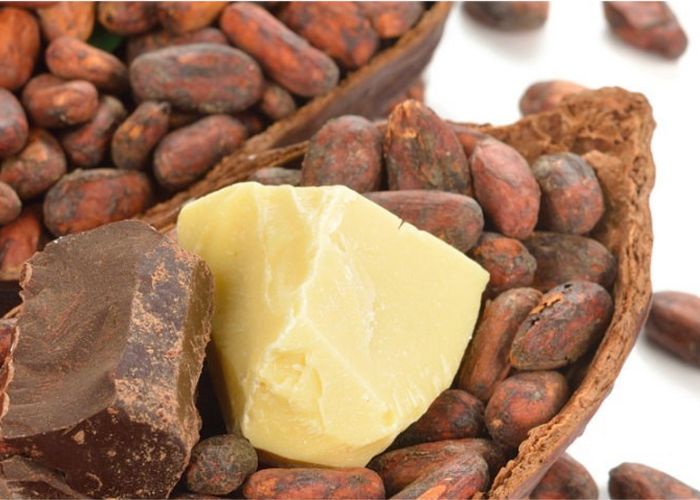Cocoa butter, which comes from cocoa beans, is a versatile and necessary part of making chocolate. Its one-of-a-kind properties add to the smooth surface, mouthfeel, and heavenly kind of chocolate. One critical part of the cocoa spread is its dissolving point, a variable that fundamentally impacts the tactile experience of consuming chocolate.
The science behind cocoa butter, its composition, and the temperature range at which it typically melts are examined in this article. Let’s read below “At What Temperature Does Cocoa Butter Typically Melt?”
Understanding Cocoa Butter:
Cocoa margarine is a fatty substance fat that is removed from cocoa beans, the seeds of the Theobroma cacao tree. This natural fat is an essential component of chocolate production and makes up a significant portion of the cocoa bean. The interesting unsaturated fat organization of cocoa margarine adds to its unmistakable properties, making it strong at room temperature yet equipped for liquefying at internal heat level.
Composition of Cocoa Butter:
Cocoa spread comprises three fundamental unsaturated fats: oleic corrosive, stearic corrosive, and palmitic corrosive. The extent of these unsaturated fats decides the actual qualities of cocoa spread. Oleic corrosive is a monounsaturated fat that bestows a fluid consistency at higher temperatures, while stearic and palmitic acids are soaked fats that add to the strong condition of cocoa spread at lower temperatures.
The presence of these unsaturated fats in unambiguous proportions gives cocoa margarine its trademark liquefying point, which is a significant figure in chocolate creation. The dissolving point of cocoa margarine is key to accomplishing the advantageous surface, snap, and mouthfeel in chocolate items.
Melting Point of Cocoa Butter:
The softening place of cocoa spread is a basic boundary in the candy parlor industry, impacting the whole chocolate-production process. The melting point typically lies between 34°C and 37°C, or 93°F and 98.6°F, respectively. This range has been strategically chosen to ensure that chocolate remains solid at room temperature but quickly melts in the mouth, providing a pleasant and smooth experience.
At What Temperature Does Cocoa Butter Typically Melt?
Tempering Process:
The treating system is a critical stage in chocolate creation that includes cautiously controlling the temperature of liquefied chocolate. Treating guarantees that the cocoa margarine particles are appropriately adjusted, bringing about a smooth and reflexive appearance, a wonderful surface, and a stable translucent design. By understanding the softening place of cocoa margarine, chocolatiers can unequivocally control temperatures during treating to accomplish the ideal attributes in the end result.
Snap and Gloss:
The melting point of cocoa butter has a direct impact on chocolate’s capacity to produce a satisfying snap when broken and a glossy surface. The crystal structure that chocolate develops when it is properly tempered contributes to its shine and audible snap. The liquefying point guarantees that these properties stay steady, giving a sign of the quality and craftsmanship of the chocolate.
Mouthfeel and Flavor Release:
The softening place of cocoa spread is intently attached to the tactile experience of consuming chocolate. This steady dissolving adds to the smooth and rich mouthfeel that is normal for great chocolate.
Factors Affecting the Melting Point:
Unsaturated fat Structure: The overall extent of oleic, stearic, and palmitic acids in cocoa margarine determines its dissolving point. Chocolatiers might choose cocoa beans with explicit unsaturated fat profiles to accomplish the wanted qualities in the last chocolate item.
Keeping Conditions: The melting point of cocoa butter can also be affected by the storage conditions of chocolate products. Openness to intensity, moistness, or vacillations in temperature can prompt changes in the chocolate’s construction, influencing its surface and in general quality.
Conching Interaction: The conching system, which includes crushing and refining chocolate, can impact the dissolving point by modifying the gem design of cocoa margarine.
Conclusion:
The softening place of cocoa margarine is a fragile harmony between science and extravagance. It is a crucial aspect that chocolatiers carefully consider throughout the chocolate-making process to guarantee a product.
From the cautious determination of cocoa beans to the exact control of temperatures during treatment. Understanding the liquefying point of cocoa margarine is fundamental for creating top-notch chocolate. With the ideal surface, snap, and flavor discharge. Hoisting the experience of partaking in this cherished guilty pleasure. I hope you like reading “At What Temperature Does Cocoa Butter Typically Melt?”



